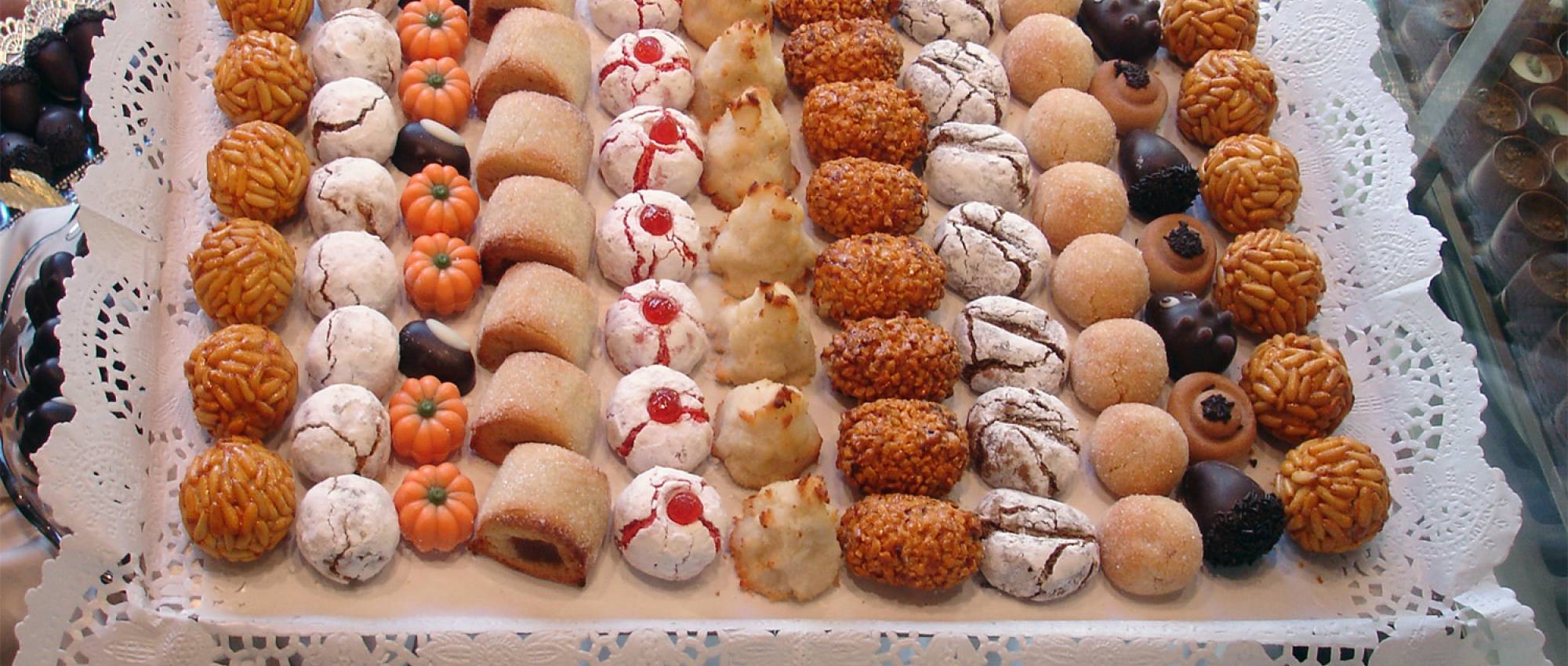Traditional cakes and sweets in the festive calendar Gastronomic heritage for those with a sweet tooth
 Tray of 'panellets'. Public domain
Tray of 'panellets'. Public domain
Food has long been used to bring people together and celebrate a religious or secular festival, and in agriculture, especially at the times of the solstice. And one of the most significant elements of such celebrations are the desserts, which have specific recipes according to the seasonal calendar.
Right at the start the year as we find the tortell de Reis or Cake of the Three Kings, a pastry stuffed with marzipan that hides both a figurine and a bean inside. Also widely known is the tortell de Sant Antoni.
Mardi Gras, or Fat Thursday, brings us coques de llardons or lardy cakes, a final excess before Lent. For these weeks leading up to Easter we have bunyols, a type of doughnut, as well as the "crema catalana" reserved for the day of Saint Joseph. Finally comes the Easter Sunday and you mustn’t miss out on the mona, or Easter cakes. Godfathers give them their godchildren. Traditionally they resemble the tortell de Reis, but instead of candied fruit they have hard-boiled eggs on top, one for every godchild.
The arrival of the summer is celebrated with the coca de Sant Joan, or Saint John’s cakes, the star of the Festival along with firecrackers. And in the autumn the panellets arrive. These small cakes are eaten on the last day of October, on the eve of All Saints’ Day. It is said that they have a round shape so as to imitate a rosary and be carried to the mass of the dead. They are blessed and eaten during the liturgical ceremony. But, if there's a sweet feast par excellence, it is Christmas, which is celebrated with neula, a type of biscuit, and torron or nougat.
For some years new sweets have been added to the calendar such as the cakes and pastries for Sant Jordi, Mother's Day or the eleventh of September.